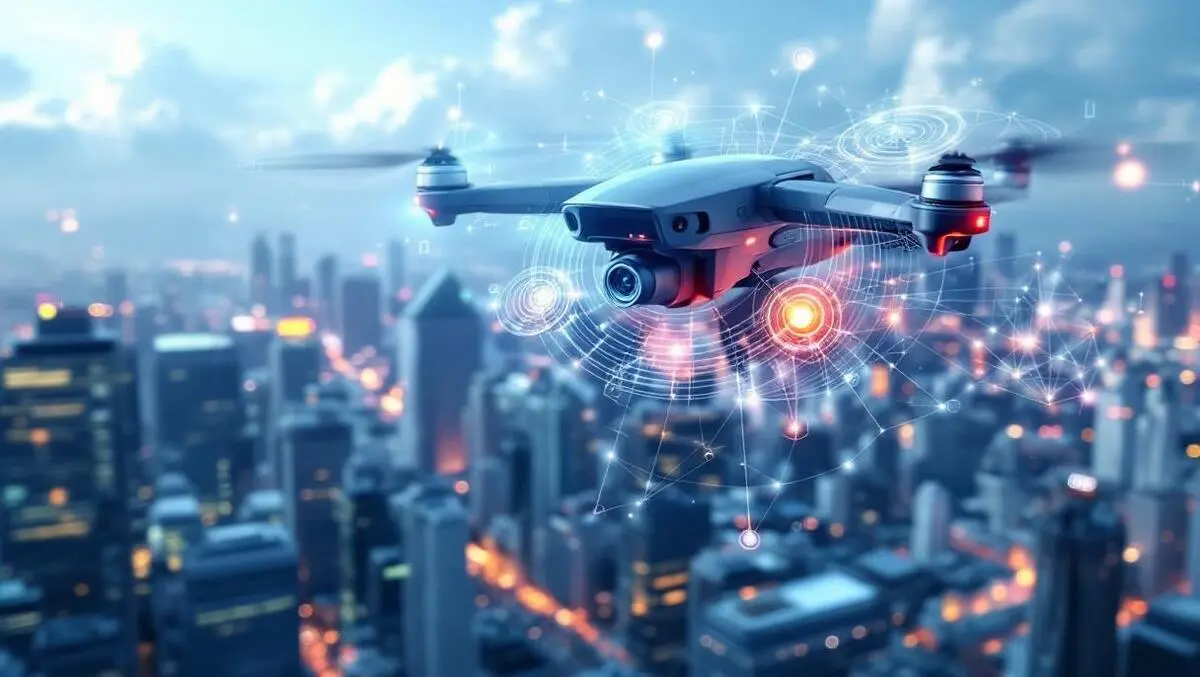
Lantronix & Aerora partner to advance AI-powered drone systems
Lantronix has entered into a new collaboration with Aerora to drive development in Edge AI-driven solutions for drones, robotics, and surveillance applications targeting multiple industry sectors.
The relationship pairs Aerora's OEM platform for AI-powered visual navigation systems with Lantronix's Open-Q System-on-Module (SoM), which leverages Qualcomm Technologies chipsets. This aims to deliver processing power for situational awareness, computational imaging, and real-time decision-making in high-demand scenarios.
Market opportunity
The global drone market is anticipated to reach $163.6 billion by 2030, with a compound annual growth rate of 15% according to Grandview Research. Segments such as logistics, agriculture, infrastructure and public safety are identified as the principal drivers for this expansion. The U.S. Federal Government has affirmed the importance of unmanned aircraft systems for commercial and government uses, offering support for manufacturers in the field.
Lantronix and Aerora are responding to increasing commercial and governmental demand for advanced drone solutions, especially where AI-driven features can offer new capabilities. The partnership is positioned to speed up technological advancement while helping original equipment manufacturers (OEMs) face the challenge of shortening development timelines and maintaining quality.
Technology integration
At the core of the solution is Aerora's platform, which incorporates pre-integration of key system components including the camera, gimbal, gimbal motors, housing, telemetry and interface. Developers can achieve simultaneous 4K video streaming alongside high-resolution thermal video, which expands operational capacity in surveillance, search and rescue, environmental monitoring, and industrial inspections.
The integrated package also includes the Teledyne FLIR Hadron 640R module and Prism software, bringing thermal and RGB imaging to new levels of precision and reliability. Such technologies address the pressure for faster time-to-market and reduced engineering overhead in a competitive sector.
"Lantronix's collaboration with Aerora promises to advance the development of AI-powered drones and other intelligent applications, equipping developers with cutting-edge tools from leading embedded compute technologies," said Saleel Awsare, CEO and president of Lantronix. "This breakthrough in advanced AI-driven solutions delivers a transformative impact, opening doors to new opportunities in both private and government sectors."
Lantronix's Open-Q SoMs serve as the foundation for the AI systems, providing reliability for drone, robotics and surveillance application developers as they seek to deploy Edge AI while retaining access to embedded compute expertise.
OEM focus and compliance
Aerora's technology has an emphasis on achieving NDAA (National Defense Authorization Act) compliance, a critical standard for many government and defence customers in the United States. By merging capabilities from Lantronix, Qualcomm Technologies, and Teledyne FLIR, Aerora intends to offer a solution that is not only flexible but scalable for manufacturing at high volumes.
"At Aerora, our core mission is to deliver rapid integration, flexible sensor solutions and fully NDAA-compliant manufacturing at scale. By collaborating closely with industry leaders like Lantronix and Qualcomm and integrating advanced imaging technologies such as Teledyne FLIR's Hadron 640R, we empower drone OEMs to significantly reduce development timelines, expand their operational capabilities and confidently meet demanding market requirements," said Ghel Ghedh, chief technology officer for Aerora.
This ongoing incorporation of AI-powered navigation, imaging, and control systems is anticipated to support OEM drone manufacturers with faster and more reliable product development, meeting both technology and regulatory benchmarks.
Through these efforts, both companies seek to support expansion in drone usage across civil, industrial, and public safety sectors, where high standards for imaging and rapid response are increasingly required.


